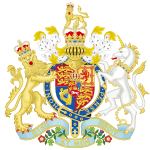Royal Mint Museum
2009 establishments in WalesMuseums established in 2009Museums in Rhondda Cynon TafNumismatic museums in the United Kingdom
The Royal Mint Museum is a numismatics museum located in Llantrisant, Wales, which houses coins, medals, artwork and minting equipment previous owned by the Royal Mint. Although the museum is located on the same site as the Royal Mint, the mint and the museum are separate companies. In partnership with the mint, a new £9 million visitor centre was built to allow members of the public to view part of the museum's collection.
Excerpt from the Wikipedia article Royal Mint Museum (License: CC BY-SA 3.0, Authors).Royal Mint Museum
Geographical coordinates (GPS) Address Nearby Places Show on map
Geographical coordinates (GPS)
| Latitude | Longitude |
|---|---|
| N 51.5541 ° | E -3.3876 ° |
Address
CF72 8TQ , Llantrisant
Wales, United Kingdom
Open on Google Maps








